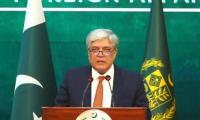The death toll of civilian and military casualties in cross-border firing along the Line of Control (LoC) is on the rise. The casualties and injuries resulting from the attack on a school van in the Nakyal sector on December 16 are the latest spell of bloodshed.
The 2003 ceasefire understanding between India and Pakistan lies in tatters. New Delhi has changed the rules of its engagement with Islamabad when the freedom struggle gained momentum in Indian-occupied Kashmir (IOK) following the brutal killing of Burhan Wani in July. India has used the attacks on its military in Pathankot and Uri as excuses to scrap the 13 years of ceasefire at the LoC, resuming artillery fire.
India’s belligerent policy regarding Pakistan is also visible in the provocative statements of the Indian prime minister and other cabinet ministers and New Delhi’s diplomatic manoeuvres against Islamabad – first at the Brics Summit in Goa and, later, at the Heart of Asia Conference in Amritsar.
The Indian government, especially Prime Minister Narendra Modi and Defence Minister Manohar Parrikar, has given up on the restraint with which previous governments used to deal with Pakistan. At a rally in Goa this year, Parrikar reportedly said: “If someone looks at the country with an evil eye, we will gouge his eyes out and put them back in his hand; we have that much power.”
Last year, on May22, he publicly announced that “India needs to employ a ‘thorn to remove a thorn’ counter-insurgency tactics in Kashmir”. The Indian media reported Parrikar as saying, “You have to neutralise terrorists through terrorists only.”
On November 10, Parrikar called on his government to abandon India’s no-first-use policy of nuclear weapons. Immediately after Parrikar’s rash comments against Pakistan, Modi declared him one of the jewels in his cabinet – an indicator that Modi had assigned his defence minister the task to lay the foundation for a change in India’s nuclear policy that allows for a pre-emptive strike.
In late September, the Modi administration opened a new chapter in military engagement with Pakistan by claiming that it had carried out surgical strikes within Pakistan-administered Kashmir. Notwithstanding the fact that Pakistan denied any surgical strike on its soil, Parrikar contemptuously claimed that the country didn’t have the courage to respond to the surgical strikes with the use of tactical nuclear weapons.
India’s game plan is to provoke Pakistan into a limited war. Its apparent strategy is to grievously hurt Pakistan on an economic footing by dragging it into an armed conflict. The assumption is that Pakistan’s armed forces will not be able to use nuclear weapons owing to international pressure. A limited conventional war is therefore best suited to India’s interests. This explains the highly provocative speeches by top Indian leaders.
In the face of these provocations and growing belligerence, Pakistan has rightly adopted the policy of restraint in dealing with India. Pakistan took the initiative to normalise bilateral ties when our de facto foreign minister Sartaj Aziz indicated that his government was ready to resume high-level talks with the Indian government.
In an effort to defuse a hostile situation, Sartaj Aziz went to Amritsar and took part in the Sixth Ministerial Conference of the Heart of Asia on Afghanistan. But India rebuffed and snubbed overtures of peace from Islamabad. Modi and Afghan President Ashraf Ghani launched a synchronised verbal assault on Pakistan.
Kabul and New Delhi’s decision to team up against Islamabad is understandable given India’s new role as a principal ally of Washington in South Asia. Modi is asserting his country’s new role in the region. The US has designated India as its major defence partner whereby it has facilitated military technology-sharing with India to a level that matches its closest allies. New Delhi is now working to replace Islamabad as the main instrument of the logistical support of the US forces in Afghanistan.
Islamabad is pitted against the alliance among Washington, Delhi and Kabul alliance in the region. Pakistan’s only ally is China. In these circumstances, it must not fall into the Indian trap and only give a measured, localised response to the LoC violations by India. The hostility from India needs to be countered at diplomatic and political levels rather than on the battlefield.
India is facing a home-grown uprising in IOK owing to its own follies. It could not win the hearts and minds of Kashmiris during the 70 years of its occupation. The erstwhile supporters of New Delhi in IOK, such as Farooq Abdullah, are now speaking up against this and supporting the freedom movement.
The more the Kashmiri agitation prolongs, the more it will hurt India. Those who have either lost their near and dear ones or suffered injuries at the hands of Indian forces in Kashmir can never forgive New Delhi and accept its occupation. A battle of nerves is raging in Kashmir and at the LoC. Pakistan must not lose its cool.
Meanwhile, what we must do is to make all possible attempts to minimise the harm to the civilian population living near the border. Civilian casualties along the LoC are the most disturbing aspect of New Delhi’s new rules of military engagement with Islamabad. Elaborate measures need to be taken to protect, rehabilitate and compensate the victims.
Email: adnanadilzaidi@gmail.com
Now, court can only act upon applications filed under its jurisdiction
Fact is that let alone Pakistan, Trump hasn’t really spoken much for any South Asian country, not even India
By embracing quantum mechanics, humanity has unlocked technologies once thought unimaginable
Regular reporting could ensure accountability and adaptive management
Report assesses readiness of over 190 countries to meet demands of the international job market
In Pakistan, prospect of introducing Starlink has been topic of discussion, particularly due to frequent internet...







